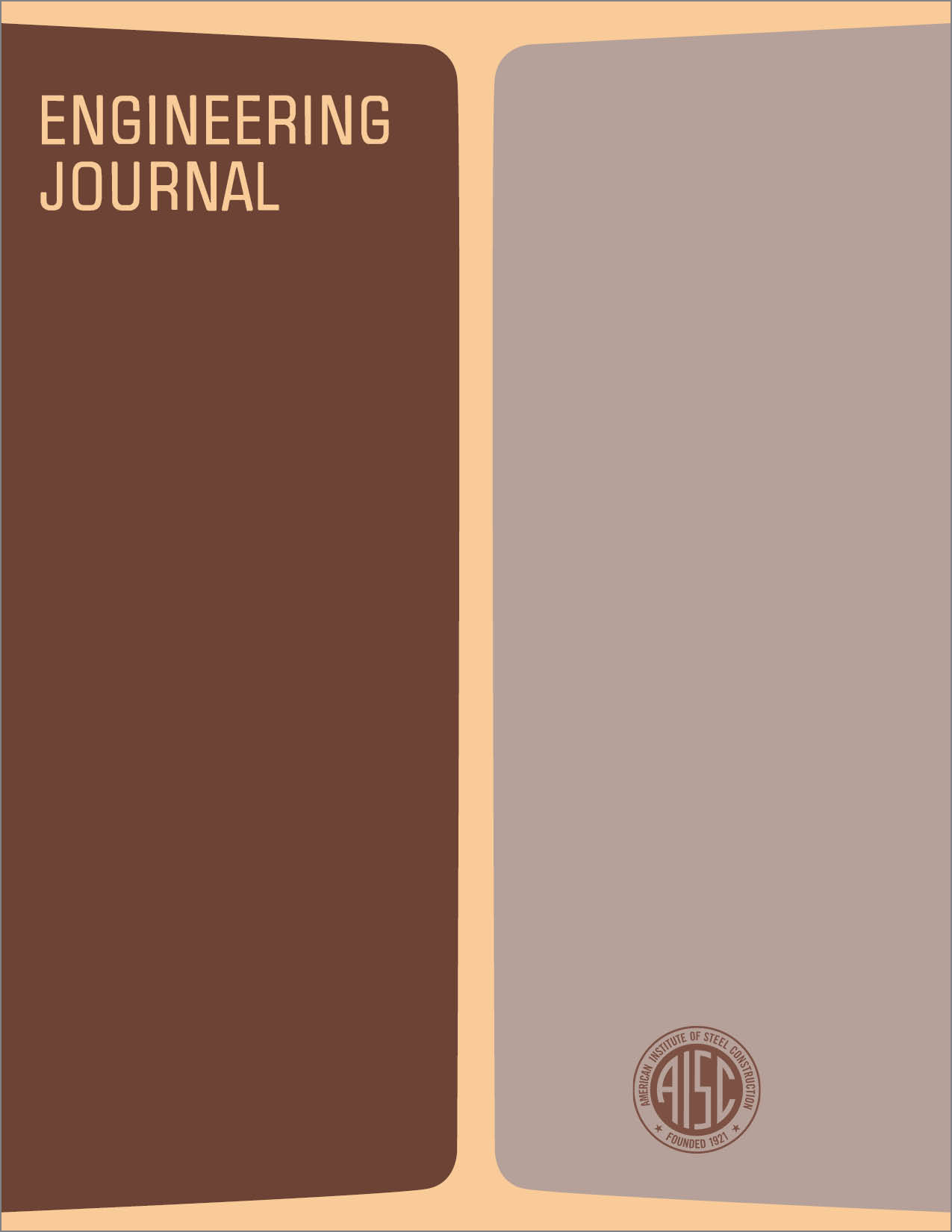A Design Aid for Connection Angle Welds Subjected to Combined Shear and Axial Loads
DOI:
https://doi.org/10.62913/engj.v22i4.450Abstract
The Eighth Edition AISC Manual of Steel Construction contains tables to assist in the analysis and design of various weld groups under eccentric loads. These are Tables XIX through XXVI and specialized Tables III and IV for connection angle welds. In all of these tables, although the load is eccentric to the weld group, it is aligned with one of the principal axes of the weld group. It is common in actual connections for the load to have an arbitrary alignment with the weld group principal axes in addition to being eccentric. There are no tables in the Eighth Edition AISC Manual covering these cases. The designer or detailer, therefore, has two options to treat these cases: the elastic method (AISC Manual pp. 4-71, 4-72) or the inelastic method (Manual pp. 4-72, 4-73). Both these options involve extensive calculations for the analysis and design of each connection. In the case of the inelastic method, a computer program is almost a necessity. Such a program is available. The elastic method calculations, while extremely tedious, can be done manually, or with a programmable calculator. The use of this method, however, will produce a connection with a higher degree of conservatism (and therefore, more expensive) than the same connection designed by the inelastic method. The purpose of this paper is to provide a design aid, in the form of a set of charts, that permits the routine use of the inelastic method in the design of commonly used weld groups subjected to loads of arbitrary orientation. These are C-shaped, L-shaped and line welds which occur in shop-welded, framed-beam connections and in similar clip angle to gusset plate welds.

